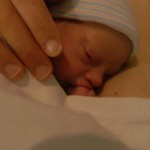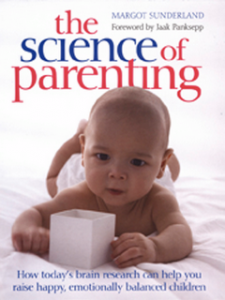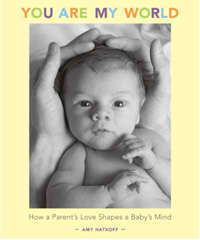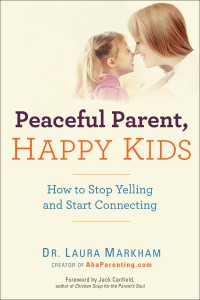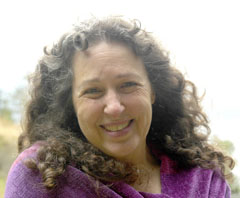By Rita Brhel, API’s publications coordinator, managing editor of Attached Family magazine and an API Leader (Hastings, Nebraska, USA).


Part of the core of Attachment Parenting is teaching our children about emotions—what they’re feeling and what to do about it, as well as how to empathize with others—a skill referred to as “emotional literacy” by parenting consultants like Ann Corwin, PhD, MEd, of Laguna Niguel, California, USA.
We know more than ever that emotional literacy is critical for healthy human development. Unfortunately it’s a skill that was not regularly nurtured in past generations, and many parents are learning about difficult emotions like jealousy and disappointment alongside their children. It was evident as I talked with Ann, mother to two grown children, that her life’s passion is in empowering parents in strengthening their relationships with their children and that emotional literacy is very much central to her work.
RITA: Thank you, Ann, for your time. Let’s start by learning how you came into your line of work?
ANN: I have my master’s degree in education with an emphasis in early child development and behavior. I started out very early in my career with an interest in relationships. In fact, my bachelor’s degree is in sociology. I went on to earn my PhD in marriage, family and child therapy.
I started out as a postpartum consultant in a hospital. I was also a childbirth educator, a Lamaze instructor. It was then when I started to make the psychological connection between birth and biology and neurobiology, and this naturally led to an interest in attachment. I was excited to learn how attachment affects our brain, how the amygdala—which manifests our emotional and relational responses—can regenerate itself, so that even if our attachment is crummy, it can be regenerated.
At the time, I was working with Dr. William Sears [pediatrician, author of the Sears parenting library and member of API’s Board of Directors] as well.
I wrote my [PhD] dissertation on parenting in pregnancy. Basically this is teaching parents how to parent during pregnancy, so while they’re learning about the stages and phases of pregnancy, they can also learn about the stages and phases of child development to know what to expect and what is required for healthy development.
RITA: And then you opened your private practice, The Parenting Doctor (www.theparentingdoctor.com).
ANN: I was inspired by Attachment Theory. I am fascinated by how we establish a relationship and how we maintain it and how you take that long term. For example, I have been married for 37 years to the same man and feel that we both really had to understand attachment to maintain our relationship through the rocky spots.
My whole career as a parenting consultant is driven by attachment.
RITA: And you are supportive of Attachment Parenting International (API).
ANN: I have always admired API and have always kept up with Barbara Nicholson and Lysa Parker [API’s cofounders]. I see Attachment Parenting as what I’m practicing. I may be on a little different road, but we’re associated—we’re both trying to get emotional literacy, which is steeped in Attachment Theory, rooted in the mainstream.
I don’t think Attachment Parenting is one way to parent—it’s the only way.
I’m eclectic in that I think you can take pieces from any parenting program and those pieces can be useful to parents. But attachment education is needed by every parent.
RITA: You have developed an emotional literacy curriculum called “Pocket Full of Feelings.” Can you share more about this?
ANN: Pocket Full of Feelings started 15 years ago.
The primary question people would ask me was how to help them keep their child from doing something. How can I keep my child from having tantrums? How can I keep my child from getting kicked out of preschool? How can I get my child to warm up to Grandma? Basically, help me with this immediate problem. I always ask them: Would you rather figure out why your child is doing this and how to have a better relationship with him or her, or do you just want to stop the behavior? Fortunately, 99 percent of parents say they’d like to have a better relationship with their child.
I teach how the most powerful part of the brain is the emotional brain, because in all circumstances we feel the feeling first and then act upon that feeling. Because while our number-one need is survival—food, water, shelter—our immediate number-two need is relationship with others. This is our need for attachment. The way we do this—attach to others—is through eye contact, touching and talking.
When we feed a baby, we are making eye contact with our baby, we are touching our baby and we are talking to our baby. If you were to put milk in a bottle, give it to your baby and turn your back on your baby without talking, your baby might begin to suckle on his own but he will stop after a couple of sucks. He needs connection with you or he will suffer from failure to thrive.
We have to have a relationship with another human being or we literally can’t survive.
My daughter handmade me a burlap pocket chart, and I would use little bears to demonstrate how we carry around our emotions and how these drive our behavior. Inevitably, everywhere I went, people would ask me where they could get one of those pocket charts. And they couldn’t get one anywhere because that was the only one there was.
Then, six years ago, I met Karin Lombardo, a mother seeking solutions for an undesirable behavior her daughter was expressing. I pointed out the feeling I thought was the root cause of her daughter’s undesirable behavior (envy), went through the simple three-step emotional literacy process with Karin, and let her take the pocket chart home with her over the weekend to practice talking about the feeling at large (envy) with her daughter. When she brought it back, she said that every parent should learn this—that instead of saying “don’t be mad” or “don’t be sad,” to tell their child that these feelings are going to come and here’s how to deal with it.
It turned out that Karin has her MA in Narrative Psychology, so I asked her to go into business with me to develop this idea. We cofounded Generation-EQ, a company committed to providing tools and solutions to aid in the development of emotional literacy and home of Pocket Full of Feelings (www.pocketfulloffeelings.com).
Pocket Full of Feelings took several years to develop, as we had to write all of the content and then we had to test it. It’s now available everywhere.
RITA: How do you hope to benefit society?
ANN: Emotional literacy has been around actually for a long time. It’s emotional intelligence, that EQ we hear about. There have been a lot of books written about it, and a lot of people talk about it. But it’s not mainstream.
We hear parents say how they have to teach their child how to read, but we don’t hear how they need to be teaching emotional literacy. We need to make emotional literacy just as much a priority to parents as school readiness. There is absolutely and positively evidence now that kids do better academically if their social-emotional needs are met.
My goal really is for parents like you and me sitting at a park and having a conversation, and maybe we ask each other about preschools. Then, we move on to talk about how our children know their colors, and then how they’re learning what emotions go with those colors and what to do about it when they have those feelings.
I don’t want this to be just some kind of sideline thing.
In this Technology Age, especially with texting, we can communicate with one another without ever hearing tone of voice or seeing facial expressions, which are vital to relationships. I saw a dad and his three-year-old child the other day, and during the entire walk, the father and child never spoke. The child never looked at his dad, because he was looking at a handheld screen. We need emotional literacy even more now than before.

